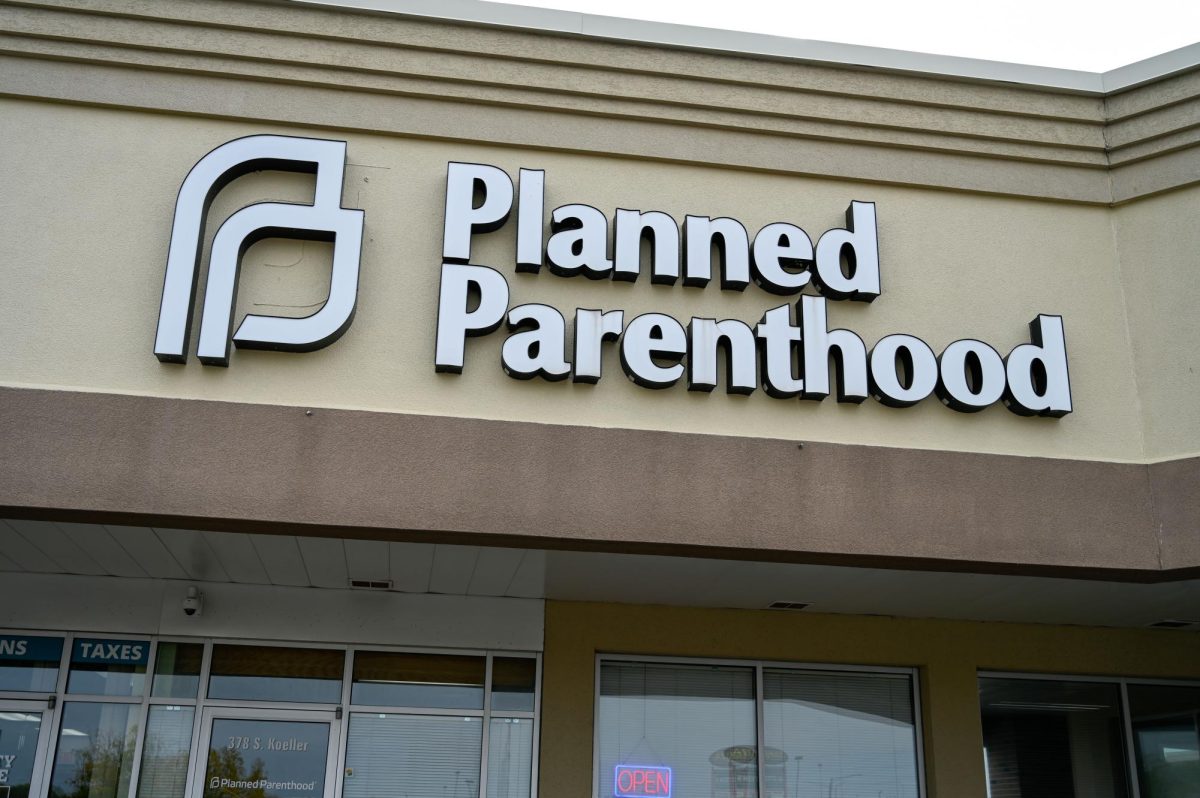Thousands of Americans have been driven out of their homes and displaced across the country due to Hurricane Helene and Hurricane Milton. This problem is not exclusive to hurricanes, but a reality for people across the nation dealing with climate change. Rising oceans, increasing wildfires and extreme weather events will be a drive in future climate migration, making Wisconsin’s location and weather desirable
Paul Van Auken is an environmental studies and sociology professor, as well as chair of the sociology department at UW Oshkosh. Auken’s research pertains to refugee resettlement, land use planning and access to public space.
As a lifelong Wisconsinite, Auken said he has always noted Wisconsin’s environment and the changes taking place within it.
“As part of [a] field trip, [students observed] native species are moving out of Wisconsin and heading north,” he said. “Other trees not of this area are migrating north.”
This phenomenon with plants thriving further north is an aspect of climate change. Auken said that this is a consequence of “extreme weather events” which have been predicted to be a major consequence of climate change for a long time and creates “bigger, more intense storms.”
According to the American Society of Civil Engineers (ASCE) report card, Wisconsin’s infrastructure is currently at a C-plus, scoring above the national grade of a C-minus.
Auken said that despite Wisconsin’s habitability in the face of climate change, infrastructure will be at risk in the face of an exacerbated climate and the wear and tear resulting from it.
“So far we are not seeing direct impacts of habitability yet,” He said. “The premise of Wisconsin being a destination for climate refugees is logical, as things that are happening are not on the emergency level. We are being impacted. A dam broke up in Manawa … you combine aging infrastructure with more rain, you’re going to have problems.”
To improve Wisconsin’s score, ASCE suggested three steps: one, increase overall investment across all infrastructure systems, two, ensure infrastructure is safe, resilient, and reliable and three, monitor access and improve data collection.
Tracy Slagter is a professor and chair of the political science department with an emphasis on international politics and policies.
Slagter discussed the role of Wisconsin when it comes to climate havens, where cities take in refugees who leave their homes due to climate change repercussions and the potential burden it places on those cities.
“The Midwest being a particularly attractive … Madison is one [climate haven], Duluth and Burlington, Vermont,” Slagter said. “There are a number of them and they’re all northern cities. These are all cities that probably don’t have the infrastructure, the housing, the wastewater management, like all of these infrastructures that you are going to need for a population that is getting larger.”
As climate change worsens, we may see more climate havens forming in the Midwest. Unfortunately, the trend is the same where these cities and towns are not prepared for the mass amounts of people who will need to come to land-locked states to escape climate change.
Climate migration will bring a necessity for infrastructural change and climate havens, but also a large cultural adaptation. Although we are all Americans, Wisconsin culture is vastly different from Florida’s culture.
“How are these cities going to cope with the cultural difference that will come when you have people who will come and are not midwesterners,” Slagter said. “We’re an interesting bunch.”
As a country, we are well aware of the housing shortage that is occurring nationally. With people migrating to the Midwest, the competition for housing is only going to worsen.
Amber Lusvardi is a political science professor, whose research specializes in policy. She said that housing, particularly the difference in access, has a rural urban divide.
“Housing has been a significant problem of people wanting to move into growing areas in Wisconsin,” Lusvardi said. “Particularly in the Fox Cities, we see a lot of people saying not having affordable housing is a problem. We have a lot of rural areas that are not as populated … presumably, more affordable housing and jobs available.”
Another aspect of the rural and urban living divide in habitable regions is the habitability of cities. Auken said that due to the urban heat island effect, there will be disproportionate experiences based on intersectionality within the cities.
“Cities are going to become less habitable due to urban heat island effects,” Auken said. “They already are. There is a huge difference between the outside of a city and the center of it due to concrete … part of the problem is that people that can afford to live in affluent areas, they can just pick up and move. A lot of people who are stuck with the negative effects, which are getting worse, are likely to be low income and people of color.”
Lusvardi said that all of this will require policy adjustments in order to counter.
“The government can look at options where we can develop,” Lusvardi said. “Are there places where there’s rooms, jobs and an opportunity for investment? We think about post-World War II development in the New Deal era.”
Along with this, Lusvardi also said that we can always invest more in our agencies. As climate change becomes more relevant, the Federal Emergency Management Agency (FEMA) may need to take a more proactive approach.
In the past, FEMA has failed to take proper action after the restructuring following 9/11. In the wake of Hurricane Katrina, Lusvardi said that, in terms of government response, it was “a disaster.” Natural disasters like these are going to occur more frequently, which means agencies like FEMA need to have a better disaster relief plan.
“Agencies like FEMA could be ready,” Lusvardi said. “But it would take a big investment from the federal government to build up agencies. We need to look ahead to the future, not only will there be more climate disasters and displaced people, but we will need to figure out what to do with them.”
Slagter said that preparations don’t solely need to be made for a response to national issues related to climate migration, but international.
“I think we’re woefully underprepared for the mass movement of people that is on the horizon,” Slagter said. “But there are all these attentive problems that require pretty quick and detailed policy solutions in different countries all over the world.”
Slagter noted specifically the Maldives, an entire country that’s mostly a meter above sea level. With a population of around 520,000, there is not much high ground to go around.
“If we take for example, the Maldives, I think it’s like 4 feet above sea level,” Slagter said. “It’s not going to end well for Maldives. Is India prepared to take all of the Maldivians in? No, the infrastructure isn’t there, the support systems aren’t there to take that many people who literally no longer have a place to live.”
Auken agreed that the international scope will be an issue, however, he said that other international migration issues outweigh the climate currently.
“People are literally losing their land, it’s falling into the sea in Bangladesh,” Auken said. “Things like that are happening but not yet on any scale to make an impact. It will happen in the future.”
Climate migration is going to become an increasingly important problem to address. If the government does not address it now, we are going to have a larger problem at hand in the future.
Midwestern cities, as climate havens, don’t have the infrastructure, housing, or government support to be properly prepared for climate change refugees throughout the nation. The Midwest is going to experience environmental changes, as well as cultural changes from the mass movement to surrounding areas.
Slagter said there needs to be an adjustment in the age of climate change.
“There is not a community that is not going to be touched by this,” Slagter said. “You’re either going to be on the move or you’re going to be subject to that movement.”








